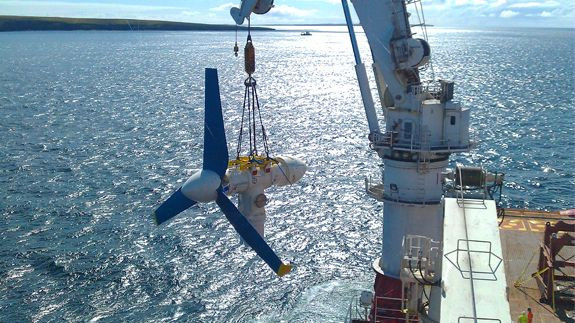World's Largest Tidal Energy Project To Start Construction Off Scottish Coast This Year

Construction of the world’s largest tidal energy array is ready to begin offshore Scotland. Atlantis Resources Ltd. (LON:ARL), the project’s developer, said it raised the £51 million ($85 million) it needs to launch the first phase this year.
The 398-megawatt MeyGen project will put Scotland and the U.K. “on the map as a global leader in marine technology,” U.K. Energy Secretary Ed Davey said in a statement. The U.K.’s Department of Energy and Climate Change put up about $17 million for the project, with the rest of the public-sector funding coming from Scottish Enterprise, Highlands and Islands Enterprise, and the Crown Estate, Atlantis Resources said.
The developers said the MeyGen project will anchor as many as 269 squat, three-bladed turbines in the seabed of the Pentland Firth’s Inner Sound, the stretch of water that separates the Scottish mainland from Stroma Island. When completed, it will generate enough electricity to power 175,000 Scottish homes.


Tidal energy technology has been around since the 1960s, when France built the world’s first project. In the decades since, however, fewer than two dozen projects have been built because of the high costs and technical challenges of building a power plant underwater, as well as concerns about the environmental impacts of marine turbines. The largest project in operation today is a 254-megawatt tidal plant in South Korea, where the power was switched on in August 2011.
Atlantis Resources spent the past 11 years developing and testing prototypes of the MeyGen project. The first phase of the project will have an 86-megawatt capacity and include construction of onshore infrastructure such as a substation, a grid connection and the installation of power export cables, Clean Technology Business Review reported. MeyGen’s first tidal power is expected to be delivered to the grid in 2016.
“Wave and tidal power have the potential to provide more than 20 percent of the U.K.’s electricity needs, and Meygen could pave the way for future projects in the Pentland Firth,” Energy Secretary Davey said.
© Copyright IBTimes 2025. All rights reserved.





















